Telecommunications came late to naval operations. Telegraphy began to play a part in land warfare as early as the Crimean War, but it was obviously useless in communicating with ships at sea. Vessels could come into port to send and receive messages, and Admirals often sent dispatch boats to the nearest cable station, but that could be several days away, leaving them in a situation not too different from Nelson's time. The delays inherent in this communication loop could frustrate commanders, but it was still a massive improvement over the days when the mail only moved at the speed of ships. And in the 1890s, a new invention appeared on the horizon that would allow ships to talk to each other beyond it.
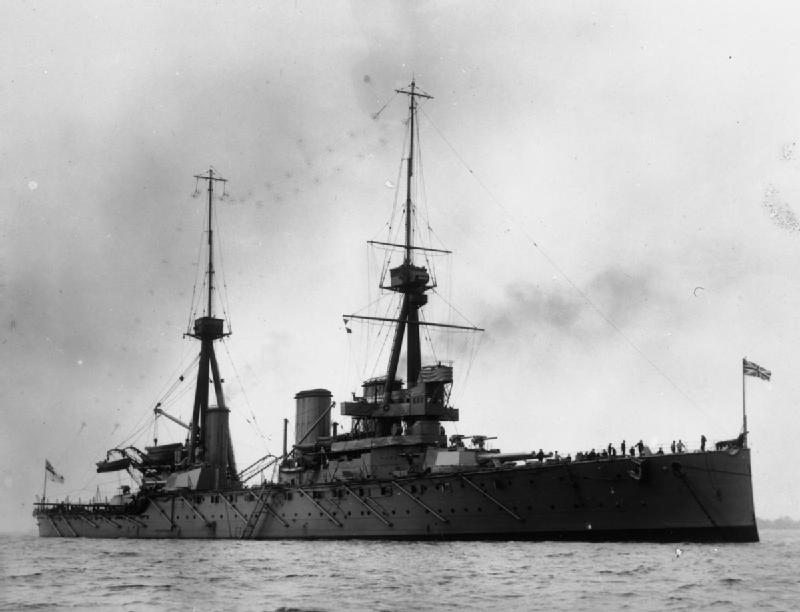
Battlecruiser Inflexible showing her high masts and radio antennas.
That invention was radio. As early as 1895, Captain Henry Jackson of the Royal Navy met with Guglielmo Marconi, the father of radio, to discuss naval applications. Two years later, a demonstration was made of communication between two vessels at sea over a distance of three miles. In 1898, Jackson managed to push his range to 14 miles, and on maneuvers the next year, ships 74 miles apart exchanged messages. Over the next five or so years, most of the major navies quickly installed sets on their larger ships, and the British made a concerted effort to put wireless telegraph (WT) sets on every ship larger than a destroyer. Jackie Fisher used it as a key component of his new doctrine of centrally-controlled forces for trade protection, and fitted his battlecruisers with high masts specifically to improve radio performance.
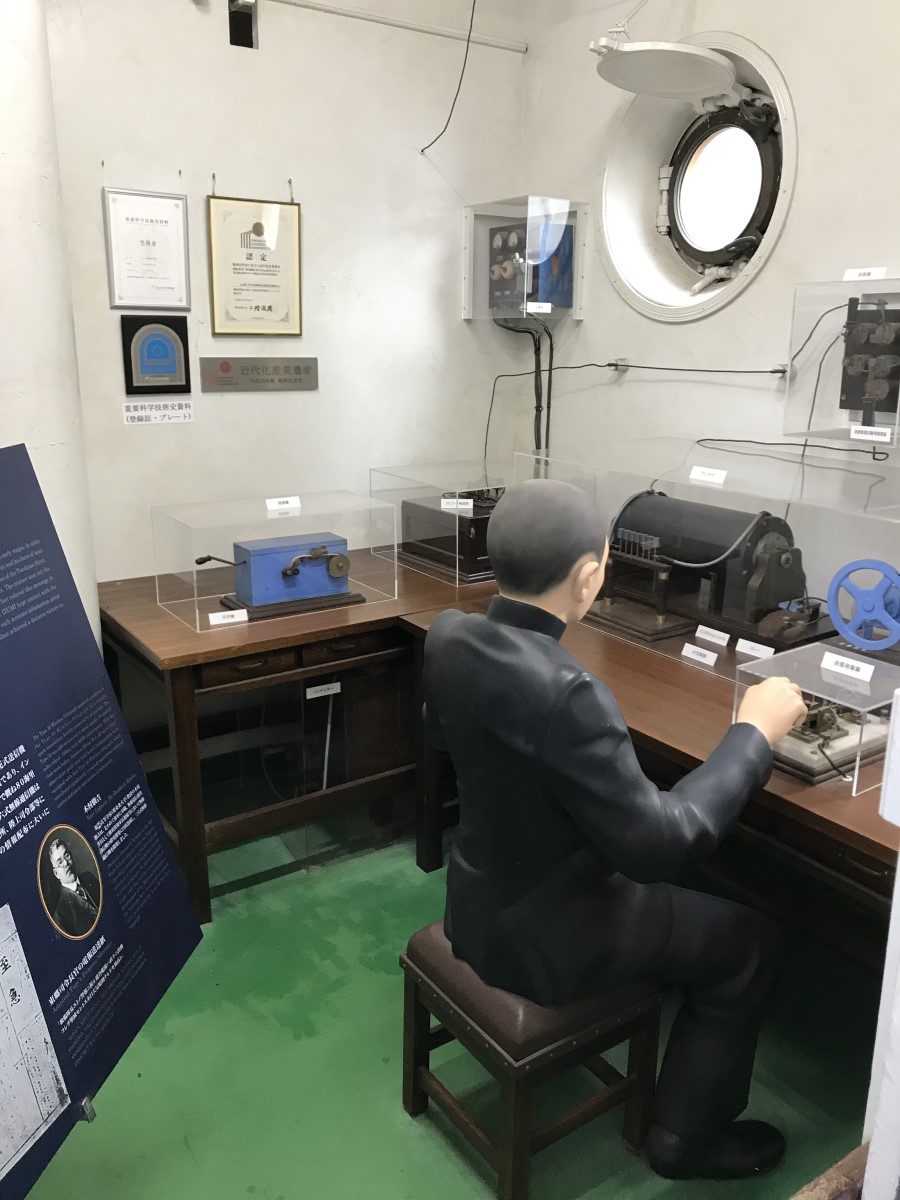
The radio room on Mikasa1
Radio first played a part in a sea battle at Tsushima during the Russo-Japanese War. The Japanese auxiliary cruiser Shinano Maru located the Russian fleet by the lights of the hospital ship Orel and signaled its location to Admiral Togo, the commander of the Japanese fleet. Unfortunately, Shinano Maru's navigation was off, and Togo found only empty ocean at the reported location. This was an unanticipated side-effect of the change from using visual signalling to radio. Previously, the flagship had been able to see the scout, or locate it based on the chain of ships relaying the signal. Similar problems would plague Jellicoe at Jutland. Happily for Togo, an updated position report guided him into contact with the Russians, and he was able to destroy their fleet. Despite its success on a strategic level, radio still had a ways to go for tactical communication. Togo had split his force into two divisions, but found radio unable to help him maintain command during the battle.
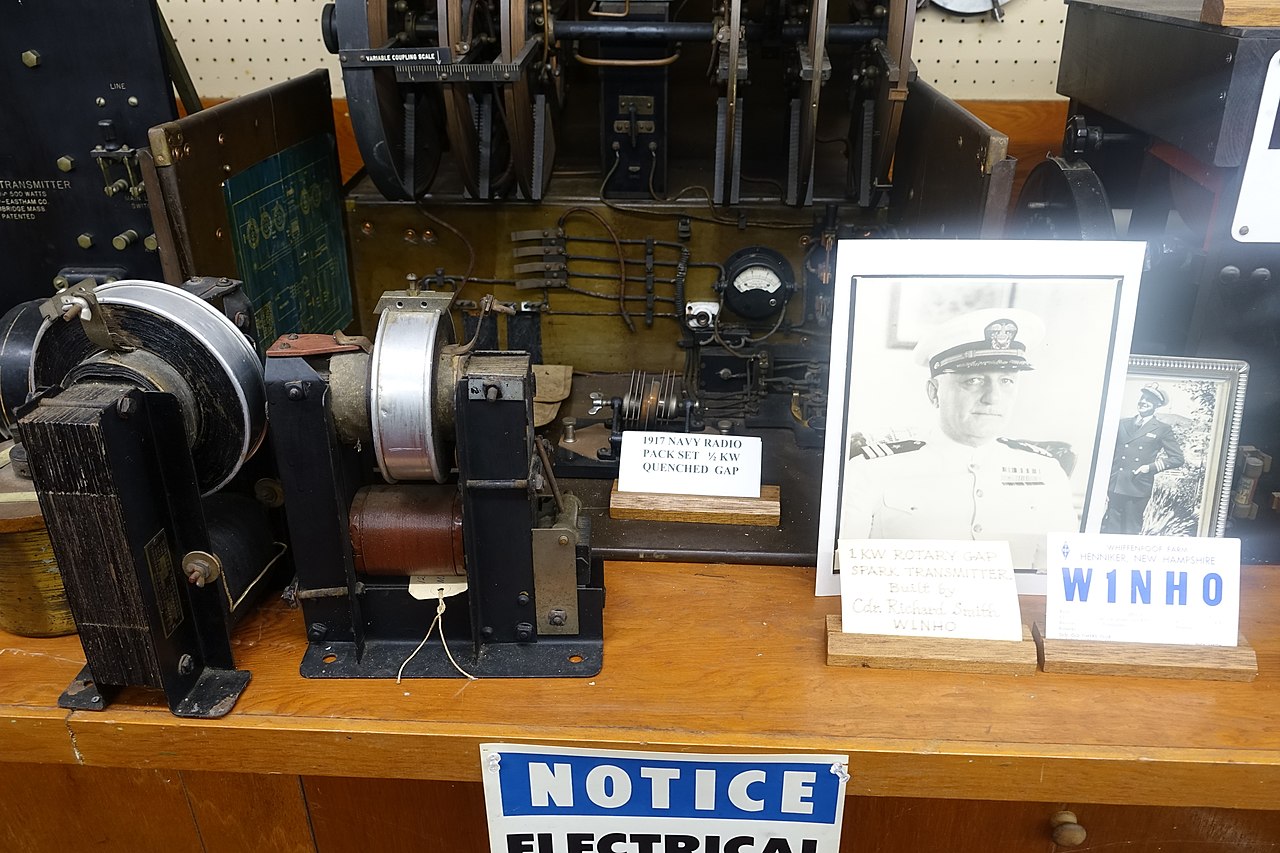
A 1917 USN Spark-gap Transmitter
These early radios all used spark-gap transmitters, devices which used a spark jumping between two electrodes to create the high-frequency waves needed for radio transmission.2 The waves rapidly died off, so transmitters sparked several hundred times a second. There were two main drawbacks to this system. First, in common with many early radio systems, it could only produce signals at fairly low frequencies. The highest frequency the RN expected to use before WWI was 2.5 MHz, a wavelength of 400'. Most other frequencies were below 1 MHz, in bands used today mainly for navigation and occasionally AM broadcasting. Particularly with the inefficient transmitters and receivers of the day, this meant large antennas were needed for good radio performance. Second, the radio waves produced were spread across a wide range of frequencies. Interference between different transmitters was common, and avoiding this meant that only a handful of widely-spaced frequencies could be used. The British developed an elaborate system of radio nets during the years leading up to WWI to mitigate this problem. The Admiral had his own frequency, which was "guarded" (monitored) by the senior officer of each group of 8 or so ships. Each of these groups had its own frequency, which was guarded by all ships in the group. The ship guarding the Admiral's frequency would pass along relevant messages, while another ship collected any messages that needed to go out, and others monitored to make sure that messages were being passed correctly. Each group should generally be close together, and thus able to use lower-powered radios, reducing the potential for interference.

A prototype US Navy radiotelephone, using a Poulsen Arc for transmission. This one was installed on the USS Connecticut, flagship of the Great White Fleet.
The problems of the spark gap meant that there was interest in other types of transmitters. The first alternative, adopted wholesale by the USN and used by the British for strategic communications between ships at sea and shore stations,3 was the Poulsen arc. This used a stable resonant arc to generate a "continuous-wave" (CW) signal,4 which meant that its energy was concentrated into a much narrower bandwith than a spark gap signal. The arc was in fact so stable that instead of turning it on and off to send signals, the frequency of the output was shifted slightly, and the special heterodyne receiver was tuned to pick up only the first frequency, making this an early form of frequency-shift keying. However, this prevented the radio operator from listening through the signal for other ships on the net, so it was rejected by the British for fleet use. The other major radio technology was the vacuum tube, which was adopted as standard by the Germans. The triode allowed amplification of signals, and could also be used as a resonator, producing a narrow-bandwidth signal that could be turned on and off at will. The vacuum tube was ultimately the superior technology, and it would win out in the 1920s, but the superior radios that it enabled also meant that the Germans used their radios more than was probably wise.
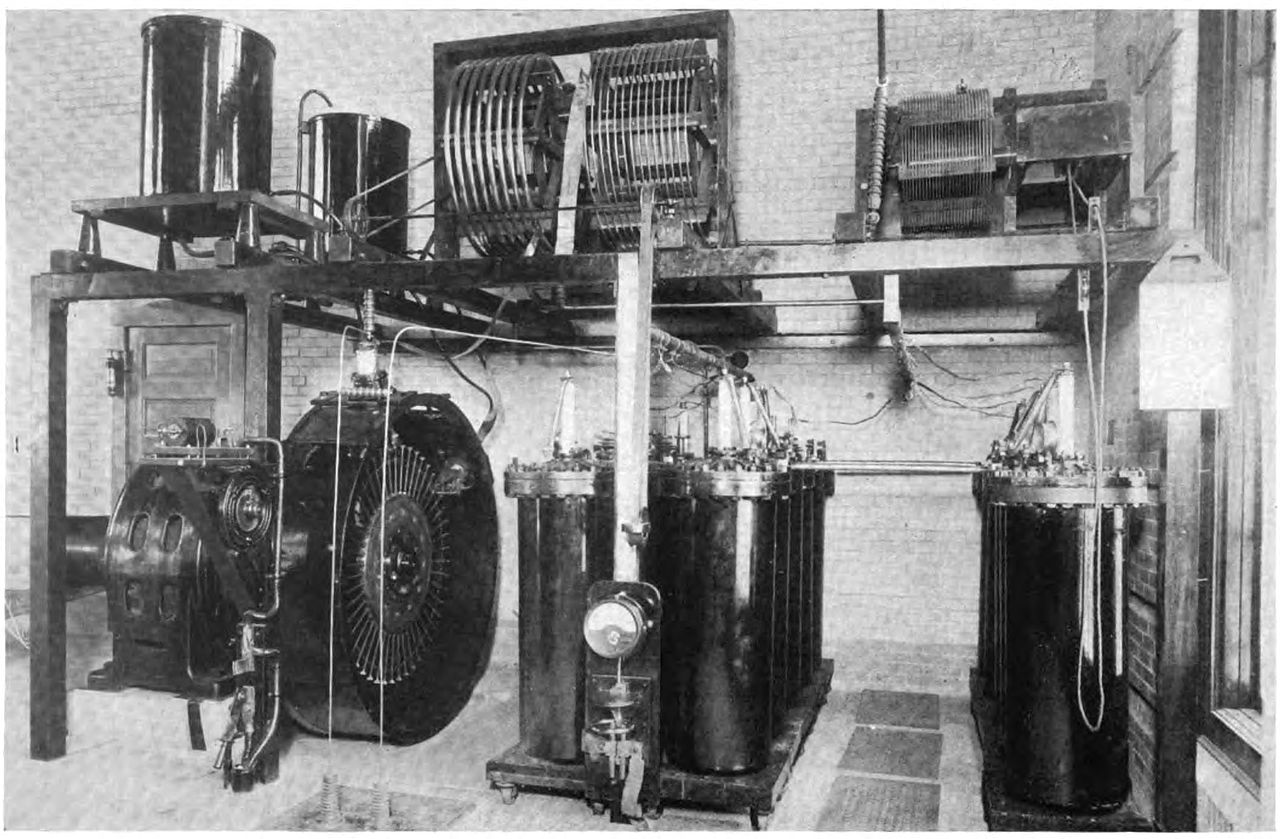
An early USN shore-based radio transmitter
Prewar experiments had taught the British the great drawback of radio: the enemy could pick up signals as easily as the intended recipient, and use them in one of several ways. The most obvious threat was the enemy reading the message, and codes were quickly devised to prevent this. However, early encryption and decryption was entirely manual, and this meant that it could take an hour or more from the time a Captain dictated a message to get it into the hands of the recipient. Even if the code remained secure, which was often not the case, the presence and nature of the signal could give the enemy useful information. The direction from which a signal came could easily be determined, and multiple stations, usually on land, could work together to locate the transmitter quite precisely. The British even managed to get a DF set to sea aboard Lion, the first over-the-horizon naval sensor in history, and by the end of the war, the Americans had built a set which fit on a destroyer, a predecessor to the famous Huff-Duff. All of this meant that the British were very cautious about using their radios, an attitude that continues to this day.
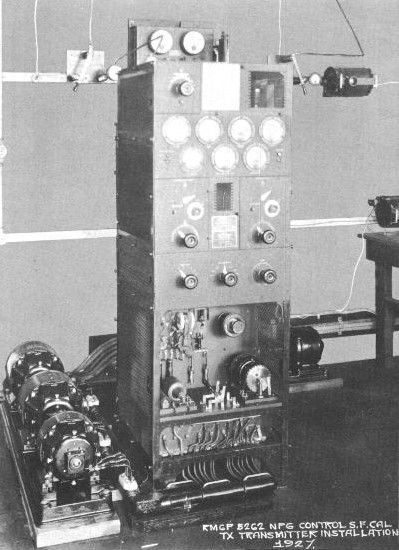
A 1920s USN vacuum tube radio
A careful enemy could also determine a great deal about operations through traffic analysis, by watching things like callsigns and the level of traffic on certain radio networks, even if the encryption on the message remained intact. For instance, the British quickly learned to predict movements of the High Seas Fleet by watching for signals from the attached minesweeper groups, which had to clear channels into the open sea for them.5 These methods worked well enough that nearly every German sortie before the end of 1916 was predicted by the British, and ultimately allowed the Grand Fleet to intercept their German counterparts at Jutland.6 By 1917, the Germans had begun to wise up and began to do things like relying almost entirely on written orders for operations.
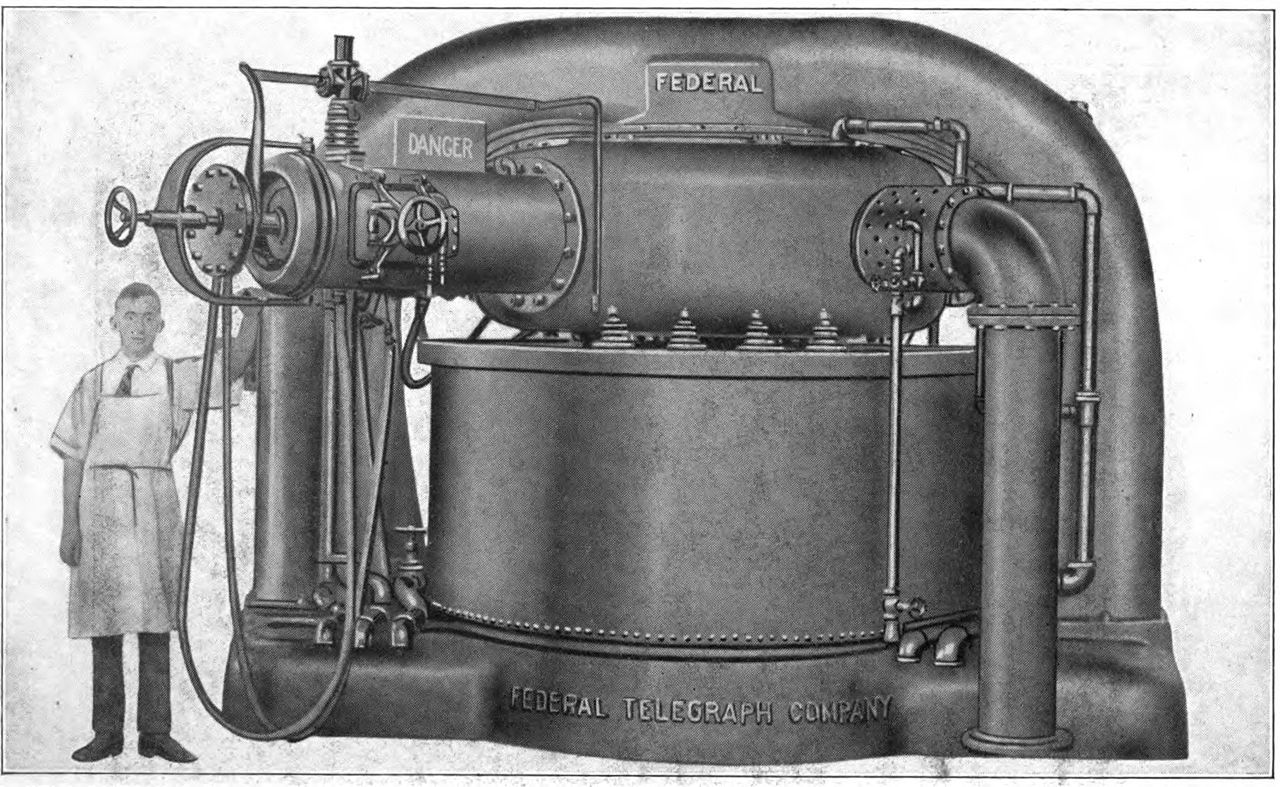
A 1 MW Poulsen Arc transmitter
The Germans appear to have been totally unaware of the dangers of interception and traffic analysis before the war, and limited their operational electronic warfare efforts only to jamming British transmitters. This usually failed due to the broadband signals produced by the spark-gap transmitters, which could usually be heard "above" and "below" the jamming signal by an experienced operator. They did break many of the British naval codes, and even did some basic traffic analysis, but failed to make good use of the resulting data.7
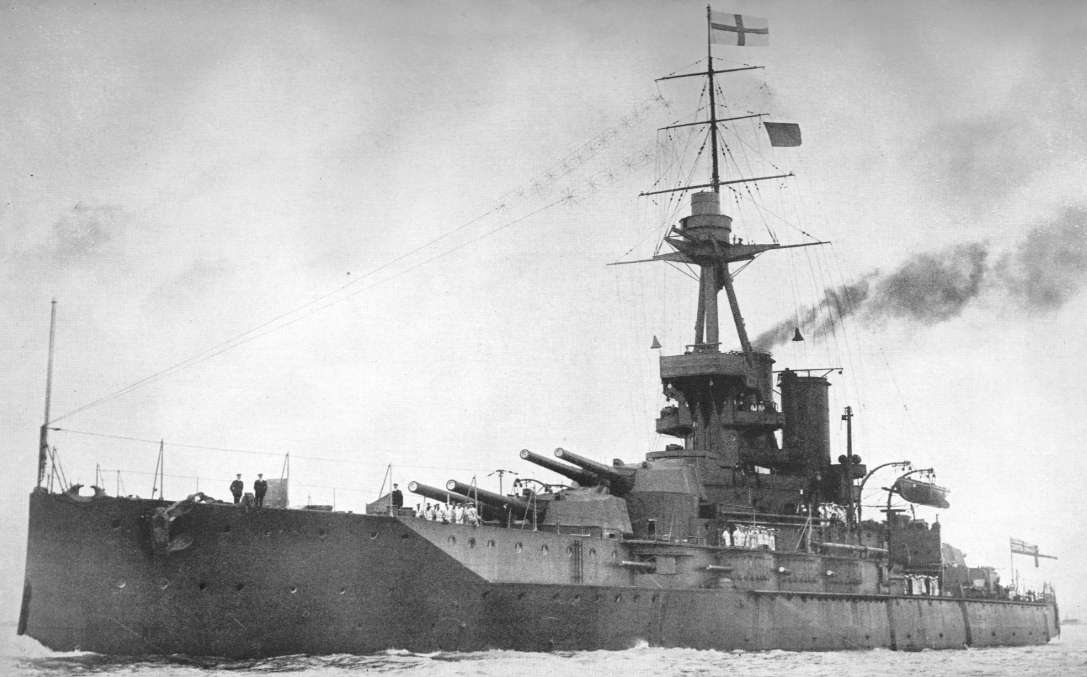
Iron Duke, Jellicoe's flagship at Jutland, showing her radio antennas
World War I was the first radio war, and despite the massive advances in technology and technique over the past century, even modern naval practice is firmly rooted in the methods developed by the British in that era. But nothing in this field was static, and WWII saw innovations of its own. We'll look at them next time.8
1 Photo courtesy of Lord Nelson. ⇑
2 Even today, radio specialists are often known as "sparks", particularly in the RN, because of these transmitters. ⇑
3 The British continued to use spark gaps for most purposes throughout WWI despite the existence of technically superior alternatives because they were rugged and their broadband signals made them resistant to interference. ⇑
4 Today, CW means morse code instead of voice, but the origin of the term as an alternative to the spark gap is obvious. Ironically, only the Poulsen Arc was a true CW transmitter, as other "CW" transmitters are switched on and off and thus don't produce a true continuous wave. ⇑
5 In both world wars, the British actually took this to the point of launching minelaying operations primarily to drive signals that they could then intercept and analyze. The WWII version saw them dropping aerial mines to give insights into Germany's secret chart system. ⇑
7 One of the German crypto organizations managed a spectacular own-goal by sending out a broken British message twice, once in their own code and once in the compromised British code. Not only did the British realize that their code had been broken, but they also got the keys to the German code. ⇑
8 I should probably mention at this point that there were a few other means of long-range signalling investigated. Carrier pigeons were carried on some ships, and even incorporated into the US military's early electronics designation system. Not incorporated explicitly into that system was underwater acoustic signalling, such as that performed by the Fessenden oscillator, although that was (and to a very limited extent still is) used. ⇑

Comments
Another great series Bean. That picture of the 1MW Poulsen Arc transmitter is rather impressive. What distances were they reaching out to eith that kind of power?
Had to laugh at your mention of the wavelength on the freq. they were expecting use being 400'. I wonder if some wag said they needed a rule that the wavelength needed to be no longer than the ships that would be using it?
But nothing in this field was static
Good one.
@Neal
If you want lots and lots of details on early USN radio practice, check this out. Unfortunately (at least for me writing this), a lot of those details are on radio regulation, not the technical/operational side. That particular transmitter was made for a site in France, and intended to provide a communications link for the AEF in France. (Illustrating this stuff is hard and I didn't realize the purpose of the transmitter until just now.) The information on it says they got reception 22 out of 24 hours despite being in an unfavorable period as far as static was concerned. That was the most important metric at the time.
Thanks for that link Bean.